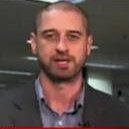
SWAT—or special weapons and tactics—teams may conjure images of commandos scaling buildings to catch crooks. But they also can be useful in a business sense, minus the guns and ammo.
Adriana Cisneros, CEO of Venezuela’s Cisneros Group, swears by a SWAT-team approach conceived by her grandfather and perfected by her father, claiming it has helped the sprawling conglomerate thrive for almost nine decades.
Conglomerates aren’t usually associated with nimble growth and often can disintegrate as they become too complex and cumbersome. Take GE, for example, which has spent the past few years shedding financial services assets, among others, to concentrate on its engineering capabilities.
Family-run Cisneros still has its fingers in many pies: it is Facebook’s ad reseller partner in Latin America and a key bottler in the region for Pepsi. The company, now headquartered in Florida, has interests in television, property, tourism and other consumer goods assets.
According to Cisneros, it has survived constant market disruptions by creating a special crack squad to zero in on business trends.
“We have a core team of generalists—my SWAT team,” she told the Yale School of Management recently. “It’s eight to 10 people who focus on trends, analyzing business opportunities, closing deals and ramping up new ventures.”
Once things get going—potentially weeks, months or years later—the business is turned over to specialist teams that run it for the long-term.
If things get bumpy, Cisneros urges CEOs to consider using a trouble-shooting method employed by IBM dating back to the 1970s. When the company fears it’s losing a competitive edge, it will “really mix things up”, she said, by pulling together a multidisciplinary team from different business units.
“I’ll grab an engineer from Venezuela, a lawyer from our Miami office, and one of our script writers and have them work on a content issue that one of our pan-regional cable channels is facing,” she said. “We’ve found it really instills a lot of innovation.”
And when teams are sizing up new verticals, she warns they also must be prepared to be patient. Cisneros, for instance, has just started dipping its toes in the renewable energy sector, having waited for 20 or 30 years for relevant wind data to become available. “So 15 years ago, it was an interesting idea, but extremely risky. Now there’s a lot of data out there and some people did make those early bets,” she said.
Apart from good information, she said Cisneros has found that it always needed a partner or specialist with skin in the game.
Finally, the company assesses which governments are serious about investing in the space. When all those things align, Cisneros is ready to pull the trigger.

Chief Executive Group exists to improve the performance of U.S. CEOs, senior executives and public-company directors, helping you grow your companies, build your communities and strengthen society. Learn more at chiefexecutivegroup.com.
0

1:00 - 5:00 pm
Over 70% of Executives Surveyed Agree: Many Strategic Planning Efforts Lack Systematic Approach Tips for Enhancing Your Strategic Planning Process
Executives expressed frustration with their current strategic planning process. Issues include:
Steve Rutan and Denise Harrison have put together an afternoon workshop that will provide the tools you need to address these concerns. They have worked with hundreds of executives to develop a systematic approach that will enable your team to make better decisions during strategic planning. Steve and Denise will walk you through exercises for prioritizing your lists and steps that will reset and reinvigorate your process. This will be a hands-on workshop that will enable you to think about your business as you use the tools that are being presented. If you are ready for a Strategic Planning tune-up, select this workshop in your registration form. The additional fee of $695 will be added to your total.

2:00 - 5:00 pm
Female leaders face the same issues all leaders do, but they often face additional challenges too. In this peer session, we will facilitate a discussion of best practices and how to overcome common barriers to help women leaders be more effective within and outside their organizations.
Limited space available.

10:30 - 5:00 pm
General’s Retreat at Hermitage Golf Course
Sponsored by UBS
General’s Retreat, built in 1986 with architect Gary Roger Baird, has been voted the “Best Golf Course in Nashville” and is a “must play” when visiting the Nashville, Tennessee area. With the beautiful setting along the Cumberland River, golfers of all capabilities will thoroughly enjoy the golf, scenery and hospitality.
The golf outing fee includes transportation to and from the hotel, greens/cart fees, use of practice facilities, and boxed lunch. The bus will leave the hotel at 10:30 am for a noon shotgun start and return to the hotel after the cocktail reception following the completion of the round.